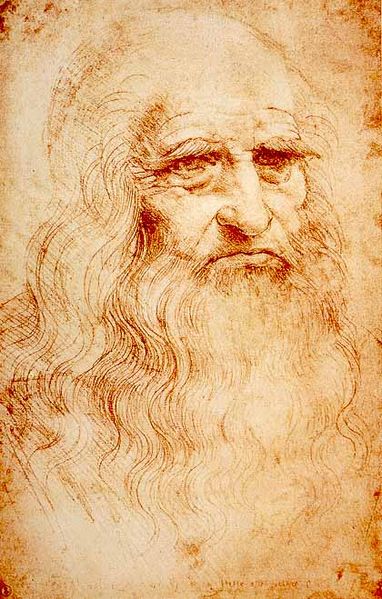| Self-portrait | |
|---|---|
 |
|
| Artist | Leonardo da Vinci |
| Year | 1512 |
| Medium | Red chalk on paper |
| Location | Biblioteca Reale, Turin |
| Dimensions | 13.1 in × 8.5 in |
| 33.3 cm × 21.6 cm | |
Often considered the Renaissance man and the greatest artist during the time of great artists, Leonardo da Vinci has done numerous paintings and drawings commissioned by several noblemen and churches during his era. Most of his artworks are related in religion and Christianity as most of them are commissioned by convents and monasteries. His drawings and sketches mostly consist of anatomical figures of a man and sketches of structural forms of vehicles. One of his drawings and sketches was an image of an aged man considered to be Leonardo da Vinci’s self-portrait.
Dated circa 1512 and done with red chalk on 33.3 cm × 21.6 cm paper, Leonardo da Vinci’s self-portrait illustrates the three quarter view of an elderly man’s head. The depicted man was shown with long and wavy hair and beard flowing down to the man’s shoulders and chest. Deep lines were made on the facial features of the man especially in the part of the eyebrows and the lines below the eyes forming pouches. The eyes were illustrated looking somewhere ahead. The fine lines and shadings were ingeniously done.
This self-portrait illustrates da Vinci as a man of wisdom since the long hair and beard are not common during the Renaissance era. There are other self-portraits of da Vinci and some of them were in some of his paintings, such as in the Adoration of the Magi where one of the figure surrounding Mary and the child Jesus was allegedly a self-portrait of the young Leonardo da Vinci. The drawing resides in Turin, Italy in the Royal Library where public viewing of the artwork is not allowed due to the drawing’s poor condition.
There are other portraits of Leonardo da Vinci or paintings that include him that are done by other artists. The Uffizi gallery in Florence houses two portraits of Leonardo da Vinci. Verrachio’s sculpture Young David was also thought to be an image of a young da Vinci.